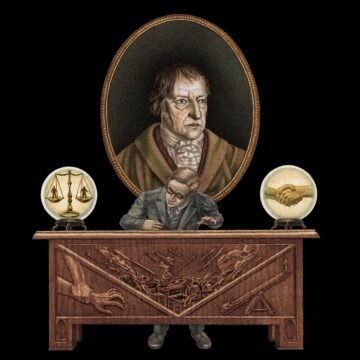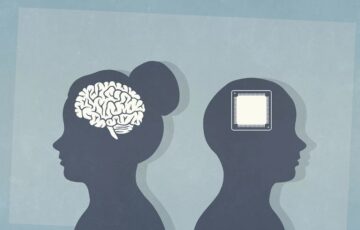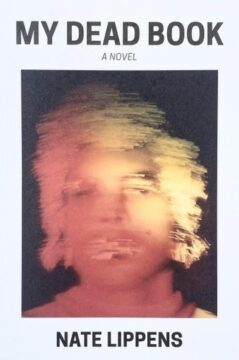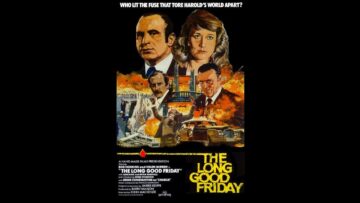David Goldman in Tablet:
 No idea has fallen flatter than the “end of history,” popularized by political philosopher Francis Fukuyama in his eponymous 1993 book. Few still believe that all human beings will accept liberal democracy and free market capitalism as the final forms of society and are uninterested in any alternative. But like many truly awful ideas, the end of history had its 15 minutes, or in this case 15 years, of fame, as a catchall motivation for America’s misguided attempt to export democracy to Afghanistan and Iraq.
No idea has fallen flatter than the “end of history,” popularized by political philosopher Francis Fukuyama in his eponymous 1993 book. Few still believe that all human beings will accept liberal democracy and free market capitalism as the final forms of society and are uninterested in any alternative. But like many truly awful ideas, the end of history had its 15 minutes, or in this case 15 years, of fame, as a catchall motivation for America’s misguided attempt to export democracy to Afghanistan and Iraq.
…The notion that history has an end begins with Isaiah’s prophecy of a messianic era in which the lion will lie down with the lamb (although the lamb won’t get much sleep, in Woody Allen’s qualification). Belief in the coming of the Messiah is a fundamental principle of Jewish faith in the list of 13 formulated by Maimonides, who added, “though he tarry.” Jewish heresies frequently take the form of “forcing the Messiah,” that is, claiming that human action rather than unknowable divine will can bring about the end of history. Forcing the Messiah pops up in Jewish history in countless guises, from Karl Marx’s proletarian revolution to the belief of some ultra-Orthodox Jews that a certain density of Torah study will persuade God to send the Messiah. The German émigré philosopher Eric Voegelin derided political messianism as “immanentizing the Eschaton,” or asserting this-worldly control of matters reserved for Providence.
More here.
Enjoying the content on 3QD? Help keep us going by donating now.

 An ideas generator powered by artificial intelligence (AI) came up with more original research ideas than did 50 scientists working independently, according to a preprint posted on arXiv this month
An ideas generator powered by artificial intelligence (AI) came up with more original research ideas than did 50 scientists working independently, according to a preprint posted on arXiv this month Digital quantification determines Americans’ quality of life. Algorithms select job applicants for interviews and employees for performance bonuses. They aggregate stories and products as we shop for news and goods, matching our preferences to the infinite bounty on offer. And they determine which homes we can buy, purchases we can make, and investments we can pursue. In love, the
Digital quantification determines Americans’ quality of life. Algorithms select job applicants for interviews and employees for performance bonuses. They aggregate stories and products as we shop for news and goods, matching our preferences to the infinite bounty on offer. And they determine which homes we can buy, purchases we can make, and investments we can pursue. In love, the  The United States doesn’t really make chips these days, instead relying on a complex process of design, production, assembly, and testing that spans the globe. The vast majority of fabrication is done in East Asia; Taiwan, in particular, produces 41 percent of all processor chips and more than 90 percent of the most powerful chips, essential to advanced computing and AI. The supply chain’s concentration in an island nation with which China expressly seeks to “reunify” gives the whole matter unusually weighty stakes. At a White House event to get the bill past the finish line in Congress, Deputy Secretary of Defense Kathleen Hicks
The United States doesn’t really make chips these days, instead relying on a complex process of design, production, assembly, and testing that spans the globe. The vast majority of fabrication is done in East Asia; Taiwan, in particular, produces 41 percent of all processor chips and more than 90 percent of the most powerful chips, essential to advanced computing and AI. The supply chain’s concentration in an island nation with which China expressly seeks to “reunify” gives the whole matter unusually weighty stakes. At a White House event to get the bill past the finish line in Congress, Deputy Secretary of Defense Kathleen Hicks  It is illegal to buy or sell an organ anywhere in the world, with the
It is illegal to buy or sell an organ anywhere in the world, with the  I’ve been reading Nate Lippens for years. I think this is the third time I’ve read My Dead Book and I’m finally getting a grip on what kind of machine his writing is. I think it’s a poetic instrument and also some kind of natural phenomena. I went to Joshua Tree one night in the aughts with a gang of people to see the Perseids. I’ve been thinking about that. We had sleeping bags and some people had drinks and their drugs of choice and then we all laid down flat looking up the sky waiting for the show. There wasn’t much. Like almost nothing. There’s one. And then in maybe about seven minutes another. Then another one. And nothing for a while. Then wham and all of the sudden we were screaming, giddy as kids because we were getting inundated with meteors making the sky like this crazy vibing net and we were ancient people animals lying there looking up in naked awe. It was the best. Start to finish I think that’s what Nate Lippens has done. Let me lay it out here. My Dead Book starts off with a fairly sentimental recitation, a recollection of one of his dead friends from the past. And then another one. I mean of course I like the way he writes. It’s clean, it’s fairly direct, and conceptually I am reminded of how practical friendship is to a lost child which this narrator definitely is. If you don’t know who you are then you make yourself up with bits and pieces of your friends.
I’ve been reading Nate Lippens for years. I think this is the third time I’ve read My Dead Book and I’m finally getting a grip on what kind of machine his writing is. I think it’s a poetic instrument and also some kind of natural phenomena. I went to Joshua Tree one night in the aughts with a gang of people to see the Perseids. I’ve been thinking about that. We had sleeping bags and some people had drinks and their drugs of choice and then we all laid down flat looking up the sky waiting for the show. There wasn’t much. Like almost nothing. There’s one. And then in maybe about seven minutes another. Then another one. And nothing for a while. Then wham and all of the sudden we were screaming, giddy as kids because we were getting inundated with meteors making the sky like this crazy vibing net and we were ancient people animals lying there looking up in naked awe. It was the best. Start to finish I think that’s what Nate Lippens has done. Let me lay it out here. My Dead Book starts off with a fairly sentimental recitation, a recollection of one of his dead friends from the past. And then another one. I mean of course I like the way he writes. It’s clean, it’s fairly direct, and conceptually I am reminded of how practical friendship is to a lost child which this narrator definitely is. If you don’t know who you are then you make yourself up with bits and pieces of your friends. On the first day of November, I stopped writing my diary of this despicable war. Not because I was bored and desperate for it to end, nor because I was unable to preserve my memories amid all the trauma, but simply because my phone broke. I had been writing my diaries on the notepad app of my phone, when it went the way of so many things in this war—patience, hope, dreams for the future—and broke.
On the first day of November, I stopped writing my diary of this despicable war. Not because I was bored and desperate for it to end, nor because I was unable to preserve my memories amid all the trauma, but simply because my phone broke. I had been writing my diaries on the notepad app of my phone, when it went the way of so many things in this war—patience, hope, dreams for the future—and broke. Sometimes you stumble across a line in a book and think, “Yeah, that’s exactly how that feels.” I had that moment reading the introduction to Zadie Smith’s 2018 book of essays,
Sometimes you stumble across a line in a book and think, “Yeah, that’s exactly how that feels.” I had that moment reading the introduction to Zadie Smith’s 2018 book of essays, South Bronx-born, but raised in Long Island,
South Bronx-born, but raised in Long Island,  On Oct. 27, 2022, the photojournalist Saiyna Bashir was interviewing the musician
On Oct. 27, 2022, the photojournalist Saiyna Bashir was interviewing the musician  W
W How did we become ‘Indians’, ‘Pakistanis’ and ‘Bangladeshis’ after the two divisions of the subcontinent? Given that national identity was so fragile and contested before 1947, how did it become a matter so ‘natural’ after it? Or did it? Did nation-making projects succeed?
How did we become ‘Indians’, ‘Pakistanis’ and ‘Bangladeshis’ after the two divisions of the subcontinent? Given that national identity was so fragile and contested before 1947, how did it become a matter so ‘natural’ after it? Or did it? Did nation-making projects succeed? T
T In “
In “